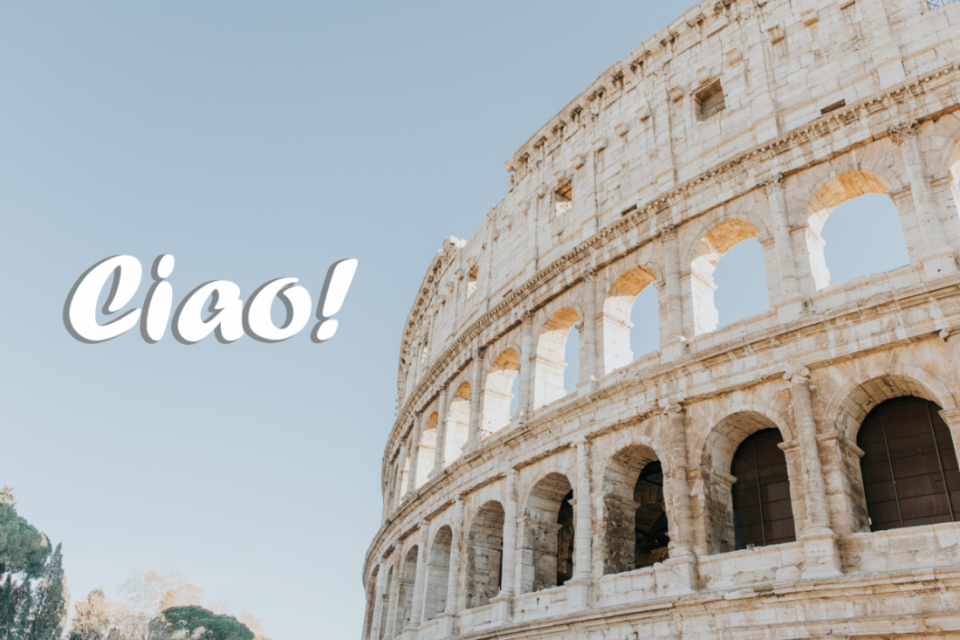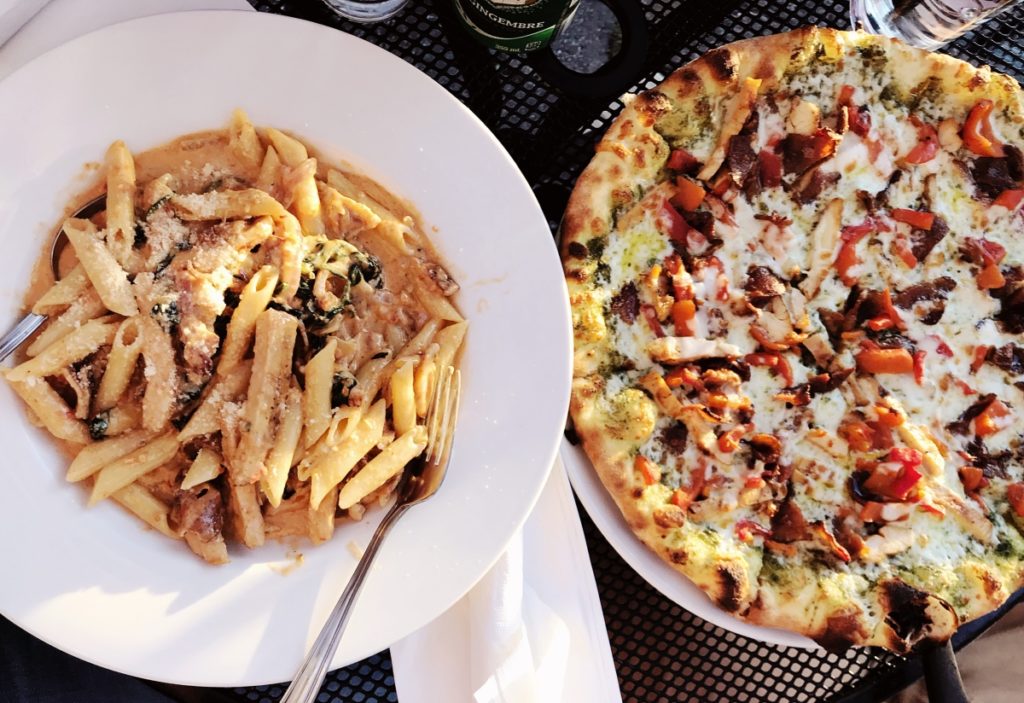100+ Essential Italian Travel Phrases for Your Trip
Planning a long-awaited vacation to Italy? Learn these 100+ Italian phrases now and take your traveling experience to the next level.
Here are multiple different ways to say "hello" in Italian. Because greetings should always be no. 1 on your list of priorities when traveling abroad.

First impressions matter. Don’t let anyone tell you otherwise. Especially in Italy where the people are so warm and friendly! Just a simple hello in Italian, like Ciao, Buongiorno or Salve, can make all the difference in a conversation with an Italian native. Maybe add a bacio sulla guancia (kiss on the cheek) to that if it is appropriate and they will absolutely love you! And don’t think that this is just “an Italian thing”. No. Your attempt to speak the local language will surely be regarded as a sign of respect everywhere you go in the world. So get your greetings on point before traveling to a foreign country. You never get a second chance to make a good first impression!
Ciao is undeniably the most common Italian greeting. In fact, I’d say it is universal and used in many countries between friends as a joke. Together, of course, with Capisce (“Do you understand?”). We all use Capisce and Buongiorno (“Good morning“) when we want to summon our inner Italians, don’t we? Hahaha!
But there’s more to Italian greetings than just Ciao. Let’s discover the best ways to say hello in Italian and how it is appropriate to use them, depending on the social context you are in.
The Italian culture is renowned for its deep respect for the elderly. That is why you should always be a bit more formal in one-to-one interactions with older people or with people you don’t personally know. In this kind of situation, you can safely use Salve. To put it into perspective, Ciao is the Italian equivalent of “Hi” while Salve is the equivalent of “Hello”.
Definitely, your best choice for an informal situation, Ciao, derived from the Venetian phrase S-ciào vostro or S-ciào su, literally meaning “I am your slave”. However, the expression was not to be taken literally. Its real meaning was rather a promise of goodwill among friends (the same “at your service” was used in English).
The phrase was later shortened to Ciào, lost its servile connotations, and started being used as an informal greeting by all people regardless of their class.
Moving on to other ways to say hello in Italian, if you want to greet a group of friends, you can also say Ciao a tutti which means “Hello everybody”. Depending on your relationship with the members of the group you are greeting, you can also say Salve a tutti or you can greet each and every one of them differently.
In Italy, it is also possible to hear children say Ciao-ciao, which is the cuter version of Ciao and it translates to “Bye-bye”.
Good morning in Italian – Buongiorno! (it can also be used as a goodbye)
Good afternoon in Italian – Buon pomeriggio!
Good evening in Italian – Buonasera! (it can also be used as a goodbye)
Good night in Italian – Buonanotte! (it isn’t used only as a bedtime expression. Italians say Buonanotte when they meet someone in the late evening.)
All four of these greetings are safe to use in any kind of formal or informal interaction.
Arrivederci is the most common way to say “goodbye” in Italian. The same as Ciao, it can be used safely in all kinds of social contexts (formal or informal).
However, you should note that, depending on when you say it, Ciao can also mean “Goodbye”. So yeah, it’s now safe to say that Ciao is an all-purpose greeting.
On the other hand, if you want to say goodbye, let’s say, to la nonna della famiglia (the grandmother of the family), you’ll want to be a bit more formal than Arrivederci. In that situation, Arrivederla is recommended.
Want more? Here are other ways to say goodbye in Italian that are suitable for both formal and informal situations:
If you want to travel to Italy, you should know that this is where you’ll meet one of the kindest, friendliest and most talkative people in Europe. Don’t believe us? Well, hear this! If you are familiar enough, the Italians will even give you an bacio sulla guancia (kiss on the cheek). Careful though! Not every social interaction calls for a cheek kiss. So don’t take the first step yet. In time, you will learn the proper Italian behavior.
The bottom line is that one week in Italy is enough to fill yourself with positive energy and joy! Learn Italian, book your trip and see for yourself.
Now let us go back to the point. Here are a few sentences you could use for a basic conversation in Italian:

P.S.: If you want to say that the pasta is delicious, you say È delizioso! (It’s delicious!).
Bonus: “Excuse me”, “please” and “thank you” are all part of the definition of being polite in any language, so here’s how to apologize, say please or thank you in Italian:
Do you want to see the Italian “hello” in action in real-life conversations? Get Mondly, the award-winning language learning app that will help you speak Italian as if you were Tuscany-born.
It can be really tricky to master the Italian way of speaking if you don’t actively live in Italy. But with Mondly, you’ll have access to a unique, fast and highly efficient learning method that allows you to learn Italian naturally with practical topics, authentic conversations, and bite-sized Daily Lessons.
Start using Mondly for free on your computer or download the app and learn Italian fast anytime, anywhere.

Planning a long-awaited vacation to Italy? Learn these 100+ Italian phrases now and take your traveling experience to the next level.

Are you ready to become un italiano vero? 🤌

Happy flirting! Ready for an exclusive list of hilariously cheesy Italian pick up lines? 😏